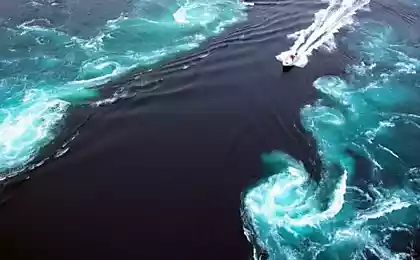611
"Topites girls": how the Werther effect
The problem podrazhaniyaEffekt Werther is a massive wave of copycat suicides, committed suicide after the widely illuminated television or other media, or described in the popular works of literature, or cinema.

The effect was discovered in 1975 by the American sociologist David Phillips, who investigated the wave of copycat suicides swept across Europe in the late XVIII century and provoked the spread of Goethe's novel "The Sorrows of Young Werther" (hence the name of the phenomenon). In this sentimental product the hero suffers from unrequited love, which brings his suicide.
Phillips noted the similarities between the situation first became famous suicide and situations of those who committed suicide after him (if the suicide bomber was aged - increased suicide among the elderly; if belonging to a certain social circle or profession - that became more frequent suicide in these areas) as well as the similarity between the first and subsequent information, scores with the ways of life. The response characteristic of imitation suicides and self-doubt, accustomed to largely follow the example of other people, especially when their life situation is reminiscent of the situation of human life, to kill herself. Desperate, seeing no other solution to their problem, they often perceive the news of someone's suicide as a kind of hint and taken to copy the actions of those who are in many ways similar to them.
In the first half of the 1980s in Germany, during and after the show of the television series "The death of the student," where at the beginning of each series demonstrated an act of suicide of the student under the wheels of the train, there was an increase of suicides by 175% among young people aged 15-19 exactly way, which was featured in the TV series - under the wheels of the train. This effect is a sharp increase in the number of suicides was repeated a year later, when the show decided to repeat.
In Austria, where the 80-ies of XX century is extremely increased number of suicides on the subway, in 1987, the Vienna Center for Crisis Assistance, together with the staff of the Vienna subway went into a kind of experiment decided not to cover the facts' death on the rails, "or at least not "inflate" the sensation of them, paying little attention to data incidents. A month later the number of suicides in the subway fell by almost three times. Since then, the Austrian media ban on coverage of such events.
In the fight against Werther effect give good results irony, sarcasm. In Russia, after the release in 1792 of the book Karamzin's "Poor Liza" observed wave samoutopleny among young girls. She stopped once near the ponds and lakes began to put the poles with the following inscription:
"Here, the water rushed Erastov bride,
Topites, girl in the pond pretty place! »
via ru.wikipedia.org/wiki/%D0%AD%D1%84%D1%84%D0%B5%D0%BA%D1%82_%D0%92%D0%B5%D1%80%D1%82%D0%B5%D1%80%D0%B0

The effect was discovered in 1975 by the American sociologist David Phillips, who investigated the wave of copycat suicides swept across Europe in the late XVIII century and provoked the spread of Goethe's novel "The Sorrows of Young Werther" (hence the name of the phenomenon). In this sentimental product the hero suffers from unrequited love, which brings his suicide.
Phillips noted the similarities between the situation first became famous suicide and situations of those who committed suicide after him (if the suicide bomber was aged - increased suicide among the elderly; if belonging to a certain social circle or profession - that became more frequent suicide in these areas) as well as the similarity between the first and subsequent information, scores with the ways of life. The response characteristic of imitation suicides and self-doubt, accustomed to largely follow the example of other people, especially when their life situation is reminiscent of the situation of human life, to kill herself. Desperate, seeing no other solution to their problem, they often perceive the news of someone's suicide as a kind of hint and taken to copy the actions of those who are in many ways similar to them.
In the first half of the 1980s in Germany, during and after the show of the television series "The death of the student," where at the beginning of each series demonstrated an act of suicide of the student under the wheels of the train, there was an increase of suicides by 175% among young people aged 15-19 exactly way, which was featured in the TV series - under the wheels of the train. This effect is a sharp increase in the number of suicides was repeated a year later, when the show decided to repeat.
In Austria, where the 80-ies of XX century is extremely increased number of suicides on the subway, in 1987, the Vienna Center for Crisis Assistance, together with the staff of the Vienna subway went into a kind of experiment decided not to cover the facts' death on the rails, "or at least not "inflate" the sensation of them, paying little attention to data incidents. A month later the number of suicides in the subway fell by almost three times. Since then, the Austrian media ban on coverage of such events.
In the fight against Werther effect give good results irony, sarcasm. In Russia, after the release in 1792 of the book Karamzin's "Poor Liza" observed wave samoutopleny among young girls. She stopped once near the ponds and lakes began to put the poles with the following inscription:
"Here, the water rushed Erastov bride,
Topites, girl in the pond pretty place! »
via ru.wikipedia.org/wiki/%D0%AD%D1%84%D1%84%D0%B5%D0%BA%D1%82_%D0%92%D0%B5%D1%80%D1%82%D0%B5%D1%80%D0%B0























